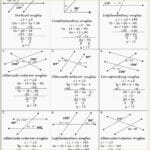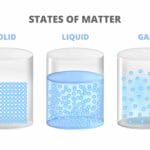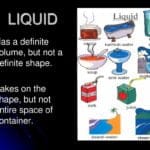Unlock Reading Comprehension with Context Clues Anchor Charts! Let’s face it, sometimes our students stumble upon tricky words while reading. But what if they possessed their own decoder rings? That’s where context clues come in! This guide unveils how to create dynamic anchor charts that transform your students into word detectives. We’ll explore the five main types of context clues – definitions, synonyms, antonyms, examples, and inferences – and provide engaging activities to ensure your students not only recognize these clues but actively use them. Get ready to unlock your students’ reading superpowers, whether you’re a context clues novice or a seasoned pro!
Cracking the Code: Understanding Context Clues
[https://www.lolaapp.com/]#
Context clues—they’re the secret agents of reading comprehension, helping us decipher unfamiliar words. Instead of constantly reaching for a dictionary, these clues offer hints scattered within the text, illuminating meaning. A classroom context clues anchor chart can dramatically improve reading comprehension. Let’s discover how to create and effectively utilize this invaluable tool.
Deciphering the Clues: Types of Context Clues
Imagine a detective at a crime scene. They wouldn’t just examine one piece of evidence, right? They’d analyze everything around it. Context clues operate similarly, encompassing the surrounding words and phrases that provide hints to a word’s meaning. Here are the usual suspects:
Definition/Explanation Clues: Sometimes, the author explicitly defines the word. It’s like a mini-dictionary entry embedded in the sentence. Look for phrases like “which means,” “that is,” or “in other words.” This approach likely provides the most straightforward path to understanding.
Example Clues: These are “show, don’t tell” clues. The author offers specific examples to illustrate the meaning. For instance, the sentence might list robins and eagles as “avian” creatures, subtly suggesting that “avian” relates to birds. This visual approach can be particularly helpful for some learners.
Synonym Clues: These are high-fives from familiar words! A synonym, a word with a similar meaning, appears near the unfamiliar word, nudging understanding in the right direction. “Or,” “like,” and “similar to” often signal synonym clues. Research suggests that using synonyms can deepen understanding and enrich vocabulary.
Antonym Clues: Opposites attract, even in vocabulary! Antonym clues utilize a word with the opposite meaning, providing a helpful contrast. Watch for “but,” “however,” “unlike,” or “in contrast.” These clues, while indirect, can illuminate meaning effectively. Some studies indicate that antonyms can be particularly helpful for visual learners.
Inference/General Context Clues: These clues demand a bit more detective work. There may not be a direct definition or synonym. However, the sentence or paragraph’s overall meaning sheds light on the word. It’s like assembling a puzzle, using all available information to uncover the missing piece. This process can strengthen critical thinking skills.
Designing Dynamic Anchor Charts: A Visual Feast
A context clues anchor chart isn’t merely a poster; it’s a vibrant learning tool. It’s the central hub for all things context clues. How can we make it both informative and visually captivating?
Color Power: Use vibrant colors to make the chart pop. Different colors could categorize each type of context clue, aiding visual distinction. Research suggests that color can enhance memory and recall.
Font-tastic Choices: Select a clear, easily readable font. Different sizes or styles can highlight key words and phrases.
Layout Logic: Organize the information logically and visually. Use bullet points, charts, or diagrams to make complex information digestible. Visual cues like magnifying glasses or detective hats add a touch of whimsy.
Digital or Physical (or Both!): A physical anchor chart encourages collaborative brainstorming and discussions. A digital version offers flexibility – easy updates, sharing, and screen projection. Consider adding interactive elements to digital charts, like clickable links or videos showcasing examples.
Student Collaboration: Involve students in the design process! Their investment in using the chart increases when they contribute to its creation. This also reinforces their understanding of context clues.
Engaging Activities: Bringing Context Clues to Life
Now that we have a stunning anchor chart, let’s energize it! These activities encourage active engagement with context clues:
Clue Detectives: Give students passages or sentences with underlined target words. They become “Clue Detectives,” using their anchor chart to identify the clue type and determine meaning.
Context Clues Creation Station: Challenge students to create their own sentences using vocabulary words and specific types of context clues. This reinforces their understanding of how these clues function in authentic writing.
Mystery Word Match: Provide words and corresponding sentences or short paragraphs. Students match words to meanings based on the context.
Differentiated Instruction: Cater to all learners. Provide support for those who struggle by pre-teaching vocabulary or offering sentence starters. Challenge advanced learners with complex texts and encourage exploring nuanced meanings.
Assessing Progress: Evaluating Detective Skills
How can we determine if students truly master these word-solving skills? Here are a few assessment approaches:
Observation: Observe student participation in discussions. Do they utilize context clues when encountering unfamiliar words? Do they accurately identify different clue types?
Reading Application: Watch how students apply these strategies during independent reading. Do they consult the anchor chart? Do they demonstrate independent word-decoding?
Formal Assessments: Quizzes or short reading passages with comprehension questions offer structured data. Focus on questions requiring not just word identification, but explanation of how context clues led to that meaning.
Expanding Contextual Awareness
Once students have grasped basic context clues, expand their learning:
Figurative Language Fun: Explore how context clues unlock the meaning of figurative language like metaphors, similes, and idioms.
Complex Text Challenges: Gradually introduce more complex texts with richer vocabulary and subtler clues.
Real-World Connections: Demonstrate how understanding context is essential for everyday life, from following instructions to interpreting news and even understanding social situations.
What are the 5 examples of context clues?
[https://www.lolaapp.com/]#
We’ve discussed the importance of context clues for tackling tricky words and enhancing comprehension. Here, we’ll delve into the five key types: inference, definition, example, synonym, and antonym. Consider them your trusty companions on your reading journey. We’ll examine each type with examples and explore their subtle influence on reading.
Inference: Reading Between the Lines
Inference clues involve deductive reasoning, like a detective piecing together a mystery. Combine existing knowledge with textual hints. For instance, in “The nocturnal bat emerged as darkness enveloped the forest,” even without knowing “nocturnal,” the context suggests night-time activity. This “puzzle-solving” actively engages readers with the text. Some linguists consider inference the most prevalent and crucial context clue.
Definition: A Direct Explanation
Authors sometimes explicitly define unfamiliar words, using “which means,” “or,” “that is,” or “in other words.” For example: “My loquacious friend talks incessantly.” The definition is presented clearly, requiring no deduction.
Example: Illustrating with Specificity
Example clues offer specific illustrations, painting a picture with words. “She enjoys cacophonous sounds like clattering pots and pans or a roaring stadium.” Even without knowing “cacophonous,” the examples suggest harsh, unpleasant noises. This method aids visualization and internalization of meaning.
Synonym: Words in Harmony
Synonym clues utilize words with similar meanings, offering embedded hints. “The fragile artifact was delicate and easily broken.” “Delicate” and “easily broken” reinforce “fragile,” enriching understanding. This approach resembles using a built-in thesaurus.
Antonym: Opposites Illuminate
Antonym clues employ words with opposite meanings, creating a contrast that highlights the target word’s meaning. “Though usually gregarious, John was quiet at the party.” “Quiet” contrasts with “gregarious,” suggesting sociability. This leverages our understanding of opposites for clarity.
Visualizing with Anchor Charts
Anchor charts visually reinforce context clue strategies. Imagine a chart with each clue type represented by a memorable image: a magnifying glass for inference, a dictionary for definition, pictures for examples, linked chains for synonyms, and opposing arrows for antonyms. Clear, engaging examples, potentially with a touch of humor, enhance understanding. Student involvement in chart creation promotes internalization.
Interactive Activities for Deeper Learning
Energize learning with interactive activities. A “Context Clues Scavenger Hunt” could involve finding different clue types in text. “Context Clues Charades” could have students act out words and meanings based on clues. Students could also create sentences with vocabulary words, incorporating different context clues.
Mastering context clues surpasses simple word definition. It empowers students with skills for confident, independent reading, unlocking knowledge and understanding. Utilizing these clues facilitates active text engagement, vocabulary building, and nuanced language comprehension. Ongoing research explores how these strategies evolve with experience and how different texts offer varying opportunities for clue usage. Remember, the concept of context clues isn’t fixed, with nuances and varying categorizations by theorists. Ongoing research continues to refine our understanding of their functionality.
What are the 5 context clue strategies?
[https://www.lolaapp.com/]#
Having established the importance of context clues, let’s examine the five primary types: inference, definition, example, synonym, and antonym. These strategies act as a decoder ring, unlocking unfamiliar words during reading and boosting vocabulary.
Decoding with Inference
Inference involves deductive reasoning, gathering evidence from surrounding words and sentences. The word isn’t explicitly defined, but hints are provided. In “The nocturnal animal scurried through the inky blackness,” the context suggests nighttime activity, even without knowing “nocturnal.” This detective work makes reading an engaging puzzle.
Definition: Direct and Clear
Sometimes, the author explicitly defines the word. Definition clues offer clear explanations, using phrases like “which means,” “that is,” or “in other words.” For instance, “The archaeologist, a scientist specializing in ancient civilizations, examined the pottery.” The meaning is immediately apparent.
Example: Illustrative Instances
Example clues provide specific instances, visualizing the concept. “Ephemeral things, like rainbows and butterflies, are fleeting.” The examples illustrate temporariness, even without prior knowledge of “ephemeral.”
Synonym: Finding Word Relatives
Synonym clues offer words with similar meanings, like a built-in thesaurus. “The loquacious professor, known for being talkative and chatty, lectured for hours.” “Talkative” and “chatty” clarify “loquacious.”
Antonym: Contrast for Clarity
Antonym clues use words with opposite meanings, creating contrast that defines the unfamiliar word. “Unlike his boisterous brother, Michael was quiet.” The contrast with “quiet” suggests that “boisterous” means loud and energetic.
These five strategies – inference, definition, example, synonym, and antonym – are powerful tools for unlocking meaning. Consider how to bring them to life through visuals, activities, and differentiation. Research suggests that interactive games and personalized learning enhance internalization. Our understanding of these strategies continues to evolve.
| Context Clue Strategy | Description | Example |
|---|---|---|
| Inference | Deduce meaning from surrounding text. | “The nocturnal animal scurried through the dark shadows.” |
| Definition | Meaning is stated directly within the sentence. | “The cartographer, or mapmaker, meticulously charted the unexplored territory.” |
| Example | Specific examples illustrate the word’s meaning. | “Perennial flowers, such as roses and lilies, return year after year.” |
| Synonym | Words with similar meanings clarify the unknown word. | “The intrepid explorer, brave and undaunted, ventured into the uncharted wilderness.” |
| Antonym | Words with opposite meanings highlight the meaning. | “In contrast to his usually taciturn nature, John was surprisingly talkative at the party.” |
Remember, these strategies aren’t always definitive. Context clues can be subtle or misleading. Double-checking with a dictionary or other resources, especially for crucial words, is always advisable. Don’t hesitate to seek guidance when needed.
What is a context clue chart?
[https://www.lolaapp.com/]#
Delve deeper into the fascinating world of matter with this insightful classifying matter worksheet. We’ve discussed the value of context clues; let’s explore their practical application. A context clue chart serves as a guide, a handy reference reminding us of the different ways to decipher unknown words by examining their surrounding text. It’s a roadmap to understanding tricky vocabulary, whether a colorful poster, a notebook page, or an interactive digital tool.
These charts benefit learners of all ages, even adults tackling complex texts, learning new languages, or improving reading comprehension.
Decoding the Clues: Types of Context Clues
Context clues come in various forms, typically outlined on a context clue chart:
Definition/Explanation Clues: The author directly states the meaning. For example: “The diurnal animal, active during the day, was a squirrel.”
Synonym Clues: A nearby word offers a similar meaning. For example: “The canine, like a wolf or fox, was a dog.”
Antonym Clues: A word with the opposite meaning provides contrast. For example: “Unlike the opaque glass, the clear glass let the sunlight in.”
Example Clues: Specific examples illustrate meaning. For example: “Various precipitation types, like rain, snow, and sleet, fell.”
Inference Clues: Logic and surrounding text help deduce meaning. For example: “She felt nostalgia looking at the old photographs.”
Creating and Utilizing Context Clue Charts
Create your chart simply, using visuals and perhaps humor. For younger learners, use kid-friendly language and encourage their involvement in the creation process to foster ownership. Pre-made charts abound online (Etsy, Teachers Pay Teachers, Pinterest).
Whether purchased or created, keep the chart accessible during reading. For engaging interaction, consider a digital chart with clickable examples and online quizzes.
Reinforcing Context Clues with Fun Activities
- Context Clues Charades: Act out words, letting others guess based on actions and context.
- Clue Word Hunt: Hidden “clue words” help decipher a secret message.












